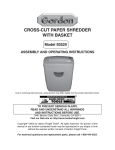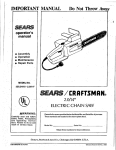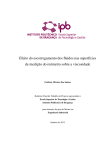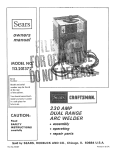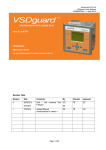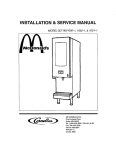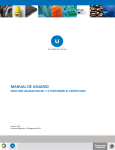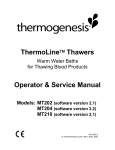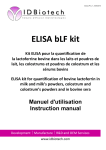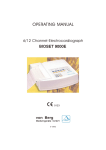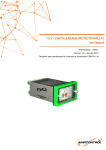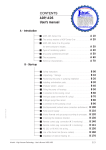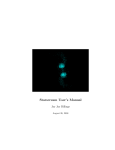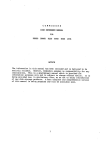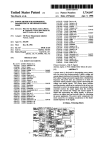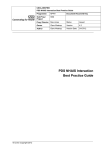Download Vegetable and fruit juice powder
Transcript
US 20130251884A1
(19) United States
(12) Patent Application Publication (10) Pub. No.: US 2013/0251884 A1
Langrish et al.
(54)
(43) Pub. Date:
VEGETABLE AND FRUIT JUICE POWDER
(76) Inventors: Timothy Langrish, Oatley (AU); Shuosi
Wang, PadstoW (AU)
Publication Classi?cation
(51) Int, C],
A23L 1/00
(52)
(21)
APP1~ N01
Sep. 26, 2013
13/813,067
(2006.01)
US. Cl.
CPC .................................. .. A23L 1/0029 (2013.01)
USPC .......................... .. 426/616‘ 426/640‘ 426/506
(22)
PCT Filed:
Jul. 29, 2011
(86)
PCT No.:
PCT/AU2011/000961
’
(57)
’
ABSTRACT
§ 371 (00)’
(2)’ (4) Date;
May 21, 2013
A powder food product comprising one or more fruit compo
nents or one or more Vegetable components or combination
(30)
Foreign Application Priority Data
Jul. 29, 2010
(AU) .............................. .. 2010903409
thereof together With an amount of Whey protein isolate effec
tive to encapsulate the one or more fruit components or one or
more Vegetable components or combination thereof.
Patent Application Publication
Sep. 26, 2013 Sheet 1 0f 10
IJAbsoIute Yieid @ 40'M% OJ
US 2013/0251884 A1
BAbsolute Weld @ 70wt% OJ
80
(Rec%ove)ry
6O
Pure OJ
Control
Casein
Figure 1
WPI
SPAH
Patent Application Publication
Sep. 26, 2013 Sheet 2 0f 10
US 2013/0251884 Al
I Proteln XAbs Yleld
'
;
‘Casein Abs Weld
SPAH Abs Yleld
24086 0O
60% maltodextrin
40% orange juice
1652*?‘
guise
O
35
45
55
65
75
85
Orange Juice Concentration (wt%)
Figure 2
95
Patent Application Publication
Sep. 26, 2013 Sheet 3 0f 10
US 2013/0251884 A1
80 W
1
£60 +
.12
.2
i
i
>-
‘
g
“
I
2 40 i
2
i
o
i
0:
i
I
3.530% orange
2 20 *
juice
.
“f”?
1
0
1
1
30
40
i
i
i
i
E
1
50
6O
70
80
90
100
Orange Juice Concentration (wt%)
Figure 3
i
i
so 7
1
I
1
A
\°
0‘,
T ; .T
to
o
_ -
i
60 W‘
4-
E
I
*1“
%
.L
‘L
E.2 i
Z 40 ,
5
!
.Q
3 20 .5i
<
O
}
mmg orange ’
juice?
i
i
I
40
5O
6O
if
70
T
i
i
8O
90
100
Orange Juice Concentration (wt%)
Figure 4
Patent Application Publication
i
1
Sep. 26, 2013 Sheet 4 0f 10
US 2013/0251884 A1
99% orange juice
80
,
/ 1% protein X
§70
g 60 ‘
a,
I-
I
{
%
i
;a, 50 i3
X556?» outrage
'5 4O
3;’
E 30 g
wize
‘
r
I < 20 1.
\ 99% orange juice
10 l
1% maitodextrin
i
O
T
i
i
I
i
1
i
-
0
1O
20
3O
40
5O
60
Maltodextrin Concentration (wt%)
Figure 5
8O
99% orange juice
I‘
A
V196
Protein X I
T
"
>
i
60
‘T
1.
=\°
%
40
60% maltodextrin
‘>1
2
g
40% orange juice
20
g
<
\ 100% orange
0
I
I
I
O
1
2
3
i
I
4
5
6
7
8
9
Protein X Concentration (wt%)
Figure 6
1O
11
I
Patent Application Publication
Sep. 26, 2013 Sheet 5 0f 10
US 2013/0251884 A1
100 q
901;
80 i
Solu(9b/i10t9y)
701j
60 %
501i
40f
O
Casein
Protein X
SPAH
Protein
Figure 7
A_ Leaving atomizer
Initial soiid
Partial crust
Complete crust
B_ Leevlng atomizer
Adsorbed layer
Crust formation
Complete crusi
Figure 8
Patent Application Publication
Sep. 26, 2013 Sheet 7 0f 10
vUi5:3
.v
. .
US 2013/0251884 A1
Patent Application Publication
Sep. 26, 2013 Sheet 8 0f 10
US 2013/0251884 A1
Figure 11
80
7° ‘
IAppIe juice and different additives
6O -
g 50
3 4o
.2
>- 30
20
10 -
o ___.h
,
100AJ
100
—
,
9OAJ:10WPI
40AJ:6OMD
4OAJ‘:5OMD:10WPl
r
90
so
L
I
__
70
WPI:MDat3:1
35
6o
mass%ratio
g
50
‘’
4o
j
_
A
'
§
,
4OAJ:60MD
30
20
1°
100M
X90AJ:10PX
0
.
0
1O
20
3O
40
50
Concentration of total additives (wt%)
Figure 12
6O
70
Patent Application Publication
Sep. 26, 2013 Sheet 9 0f 10
US 2013/0251884 A1
Figure 13
90
I
80
Different combination
.
.
70
SWPI : 15MD
.
WPI&M D
15WP' - 5M
1OWP| 1 10M!)
0$60
v
g 50
ZOWPliOMD
19WP| : 1M 0
1WPI : 19MD
£3 40 AOAJzGOMD
30
20
1°
O
100m
o
xsoAmopx
5
1o
15
2o
25
Concentretlon of WPI (wt%)
D
MD
0 AJ droplet
Q
WPI
_
0 AJ Components that need
MD to coat, may be Fructose
(a)
.
,
1 WP‘ ' 19 MD ’ so“
Not enough WPI to coat on the surface
spray_d,.ying AJ
Too much extra MD create Icebergs on
y[ m = 59%
the surface ofMD coating layers
(b)
Enough WPI to coat on the surface
Some extra MD crea tel ce b eras O"
5 WPI : 15 MD : 80AJ
the surface of MD coating layer
(‘1)
a
spraymmg AJ
Yield = 81%
15 WPI 1 5 MD I BOAJ
Some extra WPI creete Icebergs on
the surface of WPI coatlng layer
Enough MD to coattructose
((1)
Too much extra WPI create Icebergs
spraydrylng M
on the surface of WPI coating layers
Yield = 71%
19 WPI : 1 MD : BOAJ
Figure 14
Not enough MD to coat fructose
spraydrymg AJ
Yle|d = 52%
Patent Application Publication
Sep. 26, 2013 Sheet 10 0f 10
US 2013/0251884 A1
Figure 15
00 (II
R2 = 0.9935
on 0
(%)Yield
~4~1 O(II
01 O
0
1
2
3
4
Concentration of MD
5
6
Sep. 26, 2013
US 2013/0251884 A1
[0009]
VEGETABLE AND FRUIT JUICE POWDER
CROSS-REFERENCE TO RELATED
APPLICATIONS
[0001]
The present application claims priority from AU
2010903409 the content of Which is incorporated herein by
reference.
FIELD OF THE INVENTION
[0002] The present invention relates to vegetable poWders
and fruit juice poWders and a process for making the poWders.
BACKGROUND OF THE INVENTION
Commercial
Orange
Juice
Production
Process
The dehydration of fruit and vegetable juices hoW
ever is particularly dif?cult. The chemical composition of
fruit and vegetables is complex. Fruit juices and purees con
tain approximately 90% dry material comprising a mixture of
hydrocarbons; monosaccharides, (glucose, fructose), and dis
accharides (saccharose and polysaccharides). To these sub
stances are added nitrogen containing substances, organic
acids such as citric, malic, tartaric acid, etc, polyphenyl sub
stances, and vitamins. The presence of acids presents yet
another complication, and that is pH.
[0010] With a mixture of glucose and fructose, fruit juices
and purees have loW glass transition temperatures. While
glucose has a glass transition temperature of about 31° C.,
fructose has a glass transition temperature of only about 5° C.
The temperatures used during spray drying manufacturing
and
Production Forms
processes are likely to be higher than the glass transition
temperatures of the food product. This leads to problems
[0003] Freshly extracted orange juice is ?ltered through a
?nisher (screen) Where the pulp and seeds are removed, and
along With the peel, diverted to be used for by-products. At
this stage, the juice is generally made into one of tWo product
during spray drying in controlling the drying time, adhesion
to dryer Wall, removal of the product from the dryer, caking
and subsequently handling of the product. This in turn leads
to reduced product stability, decreased yields and potentially
forms: bulk froZen concentrated orange juice (FCOJ) or not
from-concentrate (NFC).
(1) Bulk FCOJ
[0004]
Juice made into bulk FCOJ is sent to an evaporator
Where vacuum and heat are used to remove excess Water in
order to obtain a base concentrate of 65° brix, Which is a
seven-to-one strength ratio to normal single-strength juice.
The bulk FCOJ is then stored at 20° F. or loWer until it is sold
or packaged for sale. Bulk FCOJ is packaged by orange juice
marketers into either froZen concentrated orange juice or
chilled reconstituted (recon) ready-to-serve (RTS) orange
juice. Packaged FCOJ is made by adding single-strength juice
spray-dryer operating problems.
[0011] Fruit juices and purees are also hygroscopic and
tend to absorb moisture from surroundings. The absorption of
Water leads to the rise of particles sticking together and to the
dryer Wall during spray drying.
[0012] To address these problems drying aids having high
Tg values are added to the food product. Drying aids reduce
overall stickiness of products such as fruit juices by raising
the Tg value. HoWever, additives fundamentally change the
nature of the products and increase the cost of the product.
Currently, the most commonly used drying aids are high
molecular Weight carbohydrates such as maltodextrin, Which
are used at concentrations up to 65% of the ?nal product.
or Water and ?avour oils and essences to bulk FCOJ to reduce
[0013] Experiments described by Roustapour et al., [An
it from 65° brix to 42° brix, Which is a four-to-one strength
ratio to normal single-strength juice. To convert this FCOJ
into ready-to-drink orange juice, consumers thaW it and then
mix it With three parts Water.
Experimental Investigation of Lime Juice Drying in a Pilot
[0005]
Reconstituted RTS juice is made by adding Water
and ?avour oils and essences to bulk FCOJ to reduce it from
65° brix to 11.8° brix, pasteuriZing it, packaging it in card
board cartons or glass containers and selling it as chilled
reconstituted orange juice.
(ii) NFC
[0006] Juice made into NFC is de-oiled to 0.02%-0.04% oil
levels With a centrifuge, then either pasteurized, chilled and
packaged or stored for future sale and/or packaging. NFC is
usually stored as froZen as blocks, or pasteurized and chilled.
PoWdered Food Products
[0007] PoWdered food products are generally useful and
advantageous compared to their liquid counter-parts as they
have increased shelf life, decreased volume/Weight,
decreased packaging and are easier to handle and transport.
Besides, this iysical state provides a stable, natural, easily
dosable ingredient Which generally ?nds usage in many foods
and pharmaceutical products.
[0008]
Spray drying is a common method of manufacture
for dehydrated liquid foods Where the moisture is quickly
removed resulting in mostly amorphous solid or a poWder.
Plant Spray Dryer Drying Technology, 24:181-188, 2006]
With lime juice illustrate the dif?culty of spray drying fruit
juice. Roustapour disclose that one of the major problems
With lime juice is that it consists of invert sugars and citric
acidWhich have loW glass transition temperatures. Due to this
characteristic, the particles stick on the dry Wall upon their
collision method. As a result, drying of these materials is very
dif?cult. In order to solve this problem various percentages of
silicone dioxide and maltodextran based on total soluble solid
content of lime juice have been used to reach a suitable drying
condition. A cool chamber Wall spray dried Was used in order
to decrease the probability of particle stickiness on the Wall.
Investigation revealed that an addition of 10% silicone diox
ide and 20% maltodextran to lime juice is the optimum
amount for a complete and successful drying of lime juice.
[0014]
Other additives and complex manufacturing pro
cesses are described for example in US. Pat. No. 4,281,026.
This US patent describes a process for producing a fruit
preparation from a natural fruit juice, Where the process com
prises removing Water from the juice by ?oWing the juice on
a heated, reciprocable, inclinable surface to reduce the Water
content to 10 to 25% by volume. A crystalline modifying
agent is then added to the product. The modifying agent and
the product are then blended While heating them.
[0015]
The heating and blending is continued until the
Water content of the product is in the range of 1 to 15% by
volume.
Sep. 26, 2013
US 2013/0251884 A1
[0016] Any discussion of documents, acts, materials,
devices, articles or the like Which has been included in the
present speci?cation is not to be taken as an admission that
any or all of these matters form part of the prior art base or
Were common general knowledge in the ?eld relevant to the
present invention as it existed before the priority date of each
claim of this application.
SUMMARY OF THE INVENTION
[0017]
In Work leading to the present invention, the inven
ably the Whey protein isolate is used in an amount effective to
encapsulate the one or more fruit components or one or more
vegetable components or combinations thereof.
[0026] Also disclosed herein is a method of manufacturing
a poWder food product comprising a Whey protein isolate and
a fruit or vegetable or combination thereof.
[0027] Accordingly, in a ?fth aspect, the present invention
provides a method of manufacturing a poWder food product
comprising a Whey protein isolate and one or more fruit
components or one or more vegetable components or combi
nations thereof, the method comprising preparing a solution
tors investigated the encapsulation ef?ciency of proteins,
hybrid additives including proteins and polysaccharide, and
the surface activity of proteins and polysaccharide When used
to encapsulate poWdered vegetable and fruit food products.
[0018] Surprisingly the inventors found that Whey protein
isolates or hybrid additives including Whey protein isolates
product.
and maltodextrin provide a superior encapsulating agent for a
understood to imply the inclusion of a stated element, integer
fruit and/or vegetable poWder product. The inventors also
or step, or group of elements, integers or steps, but not the
exclusion of any other element, integer or step, or group of
found that quail egg White protein acts as a better encapsulat
of one or more fruit and/ or vegetable juices and Whey protein
isolate and spray drying the solution to form the poWder food
[0028] Throughout this speci?cation the Word “comprise”,
or variations such as “comprises” or “comprising”, Will be
ing agent then Why protein isolates. In particular the inventors
investigated the use of these proteins using spray drying tech
elements, integers or steps.
niques.
components” are derived from one or more fruits and the “one
[0019]
[0029]
It Will be understood that the “one or more fruit
The primary advantage of using these proteins as
or more vegetable components” are derived from one or more
encapsulating agents Was found to be their potential ability to
vegetables. The term “fruit components” includes compo
nents derived from any number of parts of the fruit including
but not limited to the juice, pulp, husk, rind, skin, oils and any
other component of the fruit. Similarly, the term “vegetable
components” includes components derived from any number
of parts of the vegetable including but not limited to the juice,
pulp, husk, rind, skin, oils and any other component of the
vegetable. In a preferred embodiment, the “fruit components”
and “vegetable components” are derived from the juice,
dominate poWder surfaces at loW concentrations (in preferred
embodiments, the concentration is from about 0.5 Wt % to
about 30 Wt %). This is dramatically loWer than the concen
trations currently used With alternated encapsulating agents
such as maltodextrin (~60 Wt %). This advantage presents
further bene?ts, such as reduction in costs due to using
smaller quantities of additives, as Well as minimal alteration
to the ?avour and texture of food materials.
[0020] Disclosed herein is a poWder food product compris
ing fruit, vegetable or combination thereof together With a
Whey protein isolate. Accordingly the product comprises a
extracts, derivatives and/or distillates of the fruit and veg
etable components.
[0030] The fruit can (for example) be selected from the
fruit and/or vegetable core together With, or encapsulated by,
Whey protein isolate. The Whey protein isolate may encap su
group comprising citrus fruits (preferably clementine, lime,
late the fruit and/or vegetable core or the Whey protein isolate
lemon, orange and pummelo, etc), apples, guavas, mangoes,
berries (eg blueberries blackberries, mulberries, straWberries,
may act as a carrier. The Whey protein isolate can also be
referred to as a coating, outer-layer, Wall or ?lm.
[0021]
Accordingly, in a ?rst aspect, the present invention
provides a poWder food product comprising one or more fruit
grapefruit, mandarin, tangerine, kumquat, minneola, tangelo,
cranberries and gooseberries), bananas, lychees, pineapples,
tomatoes, melons, peaches, nectarines, grapes, Zucchini, ?gs,
pears, melons, dates, papaya, persimmons, plums and apri
components or one or more vegetable components or combi
cots. etc or any combination thereof. This group is not exhaus
nations thereof together With an amount of Whey protein
tive. Citrus fruits, as indicated above, and apples are particu
isolate effective to encapsulate the one or more fruit compo
nents or one or more vegetable components or combinations
larly preferred. More preferred examples of citrus fruits are
oranges, lemons, mandarins, tangerines and grapefruit. Pref
thereof.
[0022] Said another Way, the invention provides a food
tures of any fruits especially With oranges and/or apples are
product comprising one or more fruit components or one or
contemplated.
more vegetable components or combinations thereof to gether
With an amount of a Whey protein isolate effective to encap
sulate the one or more fruit components or one or more
erably the fruit is selected from oranges and/or apples. Mix
[0031] LoW-acid foods (less acidic) have pH values higher
than about 5 and up to about 6.9. Non-acidic or alkaline foods
have pH values of 7.0 or greater. Fruits that are less acidic
vegetable components or combinations thereof, Wherein the
include for example ?gs, Asianpears, melons, bananas, dates,
food product is in poWder form.
papaya, ripe pineapple and persimmons. In one embodiment
[0023] In one example the poWder food product can be
reconstituted, and accordingly the reconstituted form of the
product is Within the scope of the inventive product.
[0024] Accordingly, in a third aspect, the invention pro
nents is derived from one or more fruits having a pH of higher
than about 5.
vides use of a poWder food product according to the ?rst
aspect in the preparation of a reconstituted food product.
[0025] In a fourth aspect, the present invention provides use
of a Whey protein isolate in the preparation of a poWder food
product comprising one or more fruit components or one or
more vegetable components or combinations thereof. Prefer
of the invention, at least one of the one or more fruit compo
[0032]
Highly acidic foods have a pH ofless than about 5.
In one embodiment of the invention at least one of the one or
more fruit components is derived from a fruit having a loW pH
of less than about 5. In one example the fruit has a pH as loW
as 2. Described herein are fruits having a pH of about 2.5-5,
about pH 3-5, about 3.5-5, about 4-5. Fruits that are highly
acidic include for example apples, apricots, blueberries, cran
Sep. 26, 2013
US 2013/0251884 A1
berries, gooseberries, plums and citrus fruits including
270% W/W, and 299% fruit components, vegetable compo
oranges, grapefruit and lemons.
nents or mixture thereof. Most preferably the food product
[0033] Preferably the powder food product described
comprises 275% W/W fruit components, vegetable compo
herein includes at least one fruit solid derived from a high
nents or mixture thereof, preferably 280% W/W fruit compo
acidic fruit, that is, a fruit having a loW pH. Most preferably
nents, vegetable components or mixture thereof, preferably
the fruit is apple or a citrus fruit having a loW pH. In one
285% W/W fruit components, vegetable components or mix
ture thereof, preferably 290% W/W fruit components, veg
etable components or mixture thereof, preferably 2 95% W/W,
and 299% fruit components, vegetable components or mix
example, the fruit is an orange. In another example, the fruit
is apple. In another example it is tWo or more fruits at least one
of Which has a loW pH. In one example the poWder food
product comprises orange components and at least one other
fruit components.
[0034] The term “vegetable” is understood to refer to a
plant cultivated for an edible part, such as the root of the beet,
the leaf of spinach, or the ?oWer buds of broccoli or cauli
?oWer. All vegetables are included Within the scope of the
invention. This can include fungi such as mushrooms. Pre
ferred vegetables are those that can be juiced, for example,
celery, carrots, beetroot, ginger, spinach, Zucchini or any
tures thereof.
[0042] In one embodiment, the fruit and/or vegetable com
ponents are solids and/or oils.
[0043]
Examples of the invention include a range of fruit
components and vegetable components such as for example
about 40% W/W, about 70% W/W, about 80% W/W, about 90%
W/W, about 95% W/W, about 98% W/W and about 99% W/W
fruit components, vegetable components or mixture thereof.
[0044] Whey protein isolate (Which may be referred to
combination thereof. This group is not exhaustive.
[0035] Almost all vegetables are either loW acid or non
acidic.
hereinafter as “WPI”) refers to a mixture of globular proteins
[0036] Accordingly, in one embodiment of the ?rst aspect
of the invention there is provided a poWder food product
Whey protein isolate may be used as a carrier or an encapsu
comprising vegetable components together With a Whey pro
[0045] According to the ?rst aspect of the invention, the
poWder food product described herein comprises an amount
of Whey protein isolate effective to encapsulate the one or
more fruit components and/or vegetable components. There
fore, according to the ?rst aspect of the invention, the Whey
protein isolate acts as an encapsulating agent by encapsulat
ing the fruit components and/ or vegetable components.
[0046] The food product described herein preferably com
prises 50% or less Whey protein isolate content. Preferably
the loWer limit of Whey protein isolate is 0.01% W/W. For
tein isolate. For example the vegetable is selected from the
group comprising celery, carrots, beetroot, ginger, spinach, or
any combination thereof.
PoWder Product
[0037]
The poWder food product of the invention is in poW
der form. The food product of the invention may be a fruit
poWder product, a vegetable poWder product or a fruit and
vegetable poWder product.
[0038] In one embodiment, there is disclosed a poWder
food product comprising one or more fruit components
together With one or more vegetable components. Any com
isolated from Whey. Whey proteins are loW molecular Weight
proteins isolated from dairy proteins. As described herein, the
lating agent.
example the Whey protein isolate content is 250% W/W, pref
erably 245% W/W, preferably 240% W/W, preferably 235%
nents are derived from a fruit that has high acidity and a
W/W, preferably 230% W/W, preferably 225% W/W, prefer
ably 220% W/W, preferably 215% W/W, preferably 210%
W/W, preferably 25% W/W, preferably 24% W/W, preferably
23% W/W, preferably 22% W/W, preferably 21% W/W, pref
vegetable has loW acidity or is non-acidic.
[0039] In one example the combination comprises orange
erably 20.5% W/W, and 20.01% W/W.
[0047] The food product described herein comprises an
components and one or more vegetable components. In
amount of Whey protein isolate that is more than 0% W/W, that
is, there is at least some protein. Preferably the upper limit of
Whey protein isolate is 50% W/W. Preferably the amount of
bination of fruit components and/or vegetable components is
envisaged. In one example the fruit and vegetable compo
another example, the combination comprises apple compo
nents and one or more vegetable components.
[0040]
The fruit and vegetable poWder products are prefer
ably suitable for reconstitution. Preferably With Water, but can
be With other liquid. In various examples the fruit and veg
etable poWders can be used to make a fruit and/or vegetable
drink, soft drinks, liquid stock or other liquid. In other
examples the poWders can be used in poWder form as ?avour
protein is 20.01% W/W, preferably 20.02% W/W, preferably
20.05% W/W, preferably 20.75% W/W, preferably 20.1%
W/W, preferably 20.2% W/W, preferably 20.3% W/W, prefer
ably 20.4% W/W, preferably 20.5% W/W, preferably 20.6%
W/W, preferably 20.7% W/W preferably 20.8% W/W, prefer
ably 20.9% W/W, preferably 21% W/W, Wherein the amount
ings, poWder stock, drug coatings, tableting, confectionary,
is 250% W/W.
cake mixes, biscuit mixes. The poWder can also be pressed
into tablet form.
[0041] Described herein are poWder food products Which
preferably comprise 240% W/W and 299% fruit compo
nents, vegetable components or mixture thereof. Preferably
the poWder food products comprise 245% W/W fruit compo
[0048] Most preferably the amount of Whey protein isolate
is about 0.01-50% W/W, preferably about 0.02-45% W/W,
preferably about 0.05-40% W/W, preferably about 0.75-35%
W/W, preferably about 01-30% W/W, preferably about 0.2
30% W/W, preferably about 03-30% W/W, preferably about
nents, vegetable components or mixture thereof, preferably
250% W/W fruit components, vegetable components or mix
ture thereof, preferably 255% W/W fruit components, veg
etable components or mixture thereof, more preferably
260% W/W fruit components, vegetable components or mix
ture thereof, more preferably 265% W/W fruit components,
vegetable components or mixture thereof, more preferably
04-30% W/W, preferably about 05-30% W/W, preferably
about 06-30% W/W, preferably about 07-30% W/W, prefer
ably about 0.8-30% W/W, preferably about 09-30% W/W,
preferably about 10-30% W/W, preferably about 01-25%
W/W, preferably about 02-25% W/W, preferably about 0.3
25% W/W, preferably about 04-25% W/W, preferably about
05-25% W/W, preferably about 06-25% W/W, preferably
about 07-25% W/W, preferably about 08-25% W/W, prefer
Sep. 26, 2013
US 2013/0251884 A1
ably about 09-25% W/W, preferably about 1.0-25% W/W,
preferably about 01-20% W/W, preferably about 02-20%
W/W, preferably about 03-20% W/W, preferably about 0.4
20% W/W, preferably about 0.5-20% W/W, preferably about
06-20% W/W, preferably about 07-20% W/W, preferably
about 08-20% W/W, preferably about 09-20% W/W, prefer
ably about 1.0-20% W/W.
[0049] In one embodiment, the Whey protein isolate is the
sole additive in the poWder food product of the invention.
[0050] In preferred embodiments, the amount of Whey pro
tein isolate is about 0.5% W/W-10%% W/W, preferably 0.5-5%
W/W, more preferably 0.5-2% W/W. In one example the Whey
protein isolate content is about 0.5% W/W. In another example
the Whey protein isolate content is about 1 .0% W/W, in another
example the Whey protein isolate content is about 2.5% W/W,
in another example the Whey protein isolate content is 5.0%
W/W, in another example the Whey protein isolate content is
10% W/W. Preferably, the fruit components are derived from
[0055]
In one embodiment, the total amount of additive is
about 1-10% W/W. Preferably, the additives include only
Whey protein isolate and maltodextrin. In one preferred
embodiment, the poWder food product comprises 0.5 to 5%
W/W maltodextrin and 0.5 to 5% W/W Whey protein isolate. In
these embodiments, the juice components is preferably
derived from oranges. The inventors have found that additives
in amount of 1-10% W/W is effective in providing a poWder
food product containing orange components, that has favour
able characteristics, such as lack of stickiness as determined
by a high yield folloWing spray drying.
[0056]
In particularly preferred embodiments, there are
provided poWder food products containing orange compo
nents that comprise:
i) about 0.5% W/W maltodextrin and about 0.5% W/W Whey
protein isolate,
ii) about 1% W/W maltodextrin and about 1% W/W Whey
protein isolate,
oranges, preferably orange juice.
iii) about 2.5% W/W maltodextrin and about 2.5% W/W Whey
[0051] In a preferred embodiment, the amount of Whey
protein isolate is about 20-50% W/W, preferably about
protein isolate
20-45% W/W, preferably, 20-40% W/W, preferably, 20-35%
W/W, preferably 20-30% W/W, preferably 20-25% W/W, pref
protein isolate,
erably about 20% W/W. Preferably, the fruit components are
derived from apples, preferably apple juice. One or more
other extraneous additives can be included in the poWder food
product of the present invention including but not limited to of
maltodextrin, gum arabic or any preservative. In one pre
ferred embodiment, maltodextrin can is included. The advan
tage of the present invention is that these additives are not
required and can be avoided. That is, described herein are
food poWder products that mo st preferably exclude additives
such as maltodextrin. The inventors have found hoWever, that
inclusion of Whey protein isolate in combination With other
additives, such as maltodextrin, can provide favourable yields
of the poWder food product to above 60%, Which meets the
industry requirements. In particular the inventors have found
that relative small quantities of other additives, such as mal
todextrin, are required When used in combination With Whey
protein isolate.
[0052]
The poWder food product of the invention may fur
ther comprises an amount of extraneous additive that is
éabout
éabout
éabout
éabout
éabout
éabout
50% W/W, preferably éabout 45% W/W,
40% W/W, preferably éabout 35% W/W,
30% W/W, preferably éabout 25% W/W,
20% W/W, preferably éabout 15% W/W,
10% W/W, preferably éabout 5% W/W,
4% W/W, preferably éabout 3% W/W,
iv) about 5% W/W maltodextrin and about 5% W/W Whey
v) 0% W/W maltodextrin and about 1% W/W Whey protein
isolate.
[0057] In yet another embodiment of the invention, the
poWder food product comprises 1 to 20% W/W maltodextrin
and 1 to 20% W/W Whey protein isolate. In this embodiment,
the juice component is preferably derived from apples. The
inventors have found that additives in a total amount of about
20% W/W is effective in providing a poWder food product
containing apple components, that has favourable character
istics, such as lack of stickiness as determined by a high yield
folloWing spray drying. Preferably, the total amount of addi
tive is about 20% W/W. Preferably, the additives include only
Whey protein isolate and maltodextrin.
[0058] In particularly preferred embodiments, there are
provided poWder food products containing apple components
that comprises
i) about 19% W/W maltodextrin and about 1% W/W Whey
protein isolate,
ii) about 15% W/W maltodextrin and about 5% W/W Whey
protein isolate,
preferably
preferably
preferably
preferably
preferably
preferably
v) about 5% W/W maltodextrin and about 15% W/W Whey
éabout 2% W/W, preferably éabout 1% W/W, mo st preferably
éabout 0.5% W/W, éabout 0.1% W/W. Preferably the loWer
vi) about 1% W/W maltodextrin and about 19% W/W Whey
iii) about 10% W/W maltodextrin and about 10% W/W Whey
protein isolate,
iv) about 5% W/W maltodextrin and about 15% W/W Whey
protein isolate,
protein isolate,
limit of the further extraneous additive is 0.01% W/W. In one
protein isolate or
embodiment it is present in non-detectable amounts.
erably about 1% W/W most preferably about 0.5% W/W. In one
preferred embodiment the extraneous additive is maltodex
v) 0% W/W maltodextrin and about 20% Whey protein isolate.
[0059] In another embodiment of the invention the poWder
food product comprises about 50% W/W maltodextrin and
about 10% Whey protein isolate. In another example the prod
uct is produced comprising 20% maltodextrin and 10% Whey
protein isolate. In yet more examples a product is produced
comprising 5.0%, 2.5%, 1.0, and 0.5% each of maltodextrin
and 20, 15, 10% or less Whey protein isolate.
trin,
[0054] Preferably, the poWder food product comprises
[0060] It Will be understood that an additive is not restricted
to maltodextrin and can include other additives, such as for
[0053] Preferably, the food product comprises extraneous
additive in an amount of about 0.01-20% W/W, preferably
about 01-15% W/W, preferably about 02-10% W/W, prefer
ably about 0.4-8% W/W, preferably about 0.5-5% W/W, pref
erably about 5% W/W, preferably about 2.5% W/W, more pref
about 0.5 to 20% W/W maltodextrin and about 0.05 to 20%
example, gum arabic or any preservative. Maltodextrin, if
W/W Whey protein isolate. Preferably, the juice components
present at all, can be in a resistant form. This has added health
bene?ts.
are derived from oranges or apples.
Sep. 26, 2013
US 2013/0251884 A1
the ?nal product for Which the poWder food product is
[0074] FIG. 4: Effect of orange juice concentration on yield
in the presence of Whey protein isolate.
intended. If for example the poWder is to be pressed into a
tablet then the person skilled in the art Will recognise that
[0075] FIG. 5: Effect of maltodextrin concentration and
Whey protein isolate presence on yield. Vertical bars indicate
suitable excipients Will be required.
standard deviations.
Methods of Manufacture
on yield. Vertical bars indicate standard deviations.
[0062] Methods of manufacture refer to methods of
microencapsulation that are suitable for making food poW
ders. Microencapsulation methods are selected from the
2, pH~4).
[0061]
Moreover many other additives can be included in
[0076]
FIG. 6: Effect of Whey protein isolate concentration
[0077] FIG. 7: Solubility of proteins in orange juice (batch
group including spray drying, spray cooling and chilling,
?uidized bed coating, extrusion, freeZe drying and co-crys
[0078] FIG. 8: Suggested course during spray drying of
sprayed droplets in A: in the absence of surface active mate
rial and fat; B: in the presence of surface active material, but
talliZation.
no fat
[0063]
In one particular example the method for making the
poWder comprises spray drying.
[0064]
According to the fourth aspect of the invention,
there is provided a method for manufacturing a food poWder
product comprising fruit components, vegetable components
[0079]
FIG. 9: Average DSC thermograms of 100% orange
juice, 100% Whey protein isolate, and samples of 99% orange
juice: 0.5% M: 0.5% Whey protein isolate, and 99% orange
juice: 1% Whey protein isolate.
or combination thereof the method comprising preparing a
[0080] FIG. 10: The order of stickiness during spray drying
(Bhandari and HoWes, 1999; Liu et al., 2006; Huntington and
solution of fruit and/ or vegetable juice and Whey protein
Stein, 2001).
isolate and spray drying the solution to form a poWder.
[0081] FIG. 11: Comparison of the yield pro?les With dif
ferent additives, including MD, WPI and the combinations of
[0065] In one example the solution is prepared by dissolv
ing the Whey protein isolate in Water then mixing the solubi
lised protein With fruit or vegetable juice. Preferably the Water
is at room temperature (~22 degrees C.-26 degrees C.).
[0066] In another example the Whey protein isolate is not
?rst dissolved in Water. Preferably the solution is prepared by
tions from uncertainties discussion)
dissolving the Whey protein isolate in juice. Preferably the
juice is at room temperature (~22 degrees C.-26 degrees C.).
and MD on the yield With a constant total concentration of
[0067] In one example the method includes extracting the
juice from the fruit or vegetable. In another example the
method does not include extracting the juice from the fruit or
vegetable. The juice per se can be obtained from a third party.
The juice can be in concentrated form or in non-concentrated
form.
[0068] In one example the juice is treated to remove pulp
and other solids. In another example the juice is not treated to
remove pulp and other solids. The total solids content of the
juice can be measured by methods Well knoWn in the art. In
one example the method comprises determining the total
solids content of the juice.
[0069] In one example the solution of protein and fruit juice
is fed into a spray drying machine With an inlet temperature of
about 100-230 degrees C. Preferably the inlet temperature is
about 130-220 degrees C., more preferably 160-190 degrees
C. In one example the inlet temperature is about 130 degrees
MD and WPI. (Vertical bars for 40 A] :50 MD:10 WPI indi
cate the overall standard deviations)
[0082] FIG. 12: Effect of the concentration of total addi
tives on the recover. (Vertical bars indicate the standard devia
[0083]
FIG. 13: Effect of different combinations of WPI
WPI and MD. (Vertical bars indicate the standard deviations
from uncertainties discussion).
[0084] FIG. 14: Mechanistic explanation for surface activ
ity of different hybrid additives of WPI and MD.
[0085] FIG. 15: Effect of increasing maltodextrin concen
tration from 0 to 5% on spray-drying yield in the presence of
WPI.
DETAILED DESCRIPTION OF THE INVENTION
[0086]
The invention described is a poWder food product
comprising a fruit, vegetable components or a combination
thereof together With an effective amount of Whey protein
isolate. The inventors found surprisingly Whey protein iso
lates are particularly effective microencapsulating agents for
fruits (especially highly acidic fruits) and vegetables in meth
ods of spray drying.
C.
[0070] In one example the outlet temperature is about
80-120 degrees C. Preferably the outlet temperature is about
100 degrees C.
BRIEF DESCRIPTION OF THE FIGURES
[0071] FIG. 1: Effect of the presence of different proteins
on recovery compared With currently used maltodextrin (con
trol: 40 Wt % orange juice to 60 Wt % maltodextrin) and pure
orange juice. Vertical bars indicate the standard deviations.
[0072]
FIG. 2: Comparison of different protein yield pro
?les With constant protein concentration of 10 Wt % up to 80
Wt % orange juice folloWed by 5, 2.5, 1 and 0.5 Wt % for 90,
95, 98 and 99 Wt % orange juice, respectively, With remainder
maltodextrin. Vertical bars indicate standard deviation.
[0073] FIG. 3: Effect of orange juice concentration on yield
in the presence of casein.
Emits and Vegetables
[0087] In broad terms, a fruit is understood to mean a struc
ture of a plant that contains seeds. The term can have different
meanings depending on the context. In food preparation this
normally means the ?eshy seed-associated structures of cer
tain plants that are sWeet and edible in the raW state, such as
for example apples, oranges, grapes, straWberries, berries and
bananas, or the similar-looking structures in other plants,
even if they are non-edible or non-sWeet in the raW state, such
as lemons and olives. Seed-associated structures that do not ?t
these informal criteria are usually called by other names, such
as vegetables.
[0088] Citrus fruits are acidic fruits. Citrus fruits are a good
source of vitamin C for a balanced diet and the immune
system. They also contain organic acids (citric, malic, and
lactic acids). Citrus fruit include for example clementine,
Sep. 26, 2013
US 2013/0251884 A1
lime, grapefruit, mandarin, tangerine, kumquat, minneola,
TABLE l-continued
tangelo, lemon, orange and pummelo etc.
[0089] In one example the composition comprises at least
Product
one citrus fruit. In one example the citrus fruit comprises an
orange.
[0090] Citrus foods such as oranges and lemons are con
sidered to be highly acidic or to have a loW pH of less than pH
4.6. Oranges have a pH ofabout pH 3.3-4.2, lemons have a pH
of about pH 3-3.7, and grapefruit have a pH of about pH
2.2-2.4.
[0091] The invention described is particularly useful for
highly acidic fruits.
[0092] Other highly acidic fruits include for example
apples (pH about 3.3-3.9), cranberries, and blackberries.
[0093] The pH of various fruits and vegetables are provided
in Table 1. It Will be appreciated that the pH’s are only
approximate and examples Will exist outside of the ranges.
TABLE 1
Product
Approximate pH
Tomatoes
[0094]
Approximate pH
4.3-4.9
Turnips
5 .2-5 .6
Vegetable juice
3 .9-4.3
Watermelon
5.2-5.6
The “one or more fruit components” are derived
from one or more fruits and the “one or more vegetable
components” are derived from one or more vegetables. The
term “fruit components” includes components derived from
any number of parts of the fruit including but not limited to the
juice, pulp, husk, rind, skin, oils and any other component of
the fruit. Similarly, the term “vegetable components”
includes components derived from any number of parts of the
vegetable including but not limited to the juice, pulp, husk,
rind, skin, oils and any other component of the vegetable. In
a preferred embodiment, the “fruit components” and “veg
etable components” are derived from the juice, extracts,
derivatives and/or distillates of the fruit and vegetable com
ponents.
[0095] Accordingly, the fruit and vegetable poWder prod
Apples
Apricots
Apricots, canned
2.9-3.9
3.3-4.8
3.4-3.8
ucts may be prepared from the primary juice product With or
Apricots, nectar
3.8
Without pulp or other solids. It is not necessary to screen the
product to remove solids. The juice to be prepared as a poWder
Artichokes
5.5-6.0
Asparagus
6.0-6.7
Avocados
Bananas
Beans
Beets
Blackberries
Blueberries
Beets
6.3-6.6
4.5-5 2
5.6-6.5
5.3-6.6
3.9-4.5
3 1-3.4
4.9-5.5
Broccoli, cooked
Cabbage
5.3
5 2-5 .4
Cactus
Capers
4.7
6.0
Carrots
5.9-6.3
Celery
5.7-6.0
Cherries
Coconut
Corn
3.2-4.5
5.5-7.8
5.9-7.3
Cranberry juice
2.3-2.5
Dates
Gooseberries
6.5-8.5
2.8-3.1
Grapefruit
Grapes
3.0-3.7
3.5-4.5
Leeks
Lemons
Limes
5.5-6.2
2 2-2.4
1.8-2.0
Mangos
5.8-6.0
Melons
Nectarines
6.0-6.7
3 .9-4.2
Olives, green, fermented
Olives, black
3.6-3.6
6 0-7.0
Oranges
3.3-4.2
Peaches
Pears
Peas
Pickles, sour
3.4-4 1
3.6-4.0
5.8-6.4
3.0-3 .4
Pickles, dill
3.2-3 6
Pimento
Plums
Potatoes
4.6-5.2
2.8-3.0
5.6-6.0
Pumpkin
Raspberries
4.8-5.2
3.2-3.6
Rhubarb
Sauerkraut
3.1-3.2
3 .4-3 .6
Spinach
Squash
5.5-6.8
5.0-5.4
Strawberries
SWeet potatoes
3.0-3.9
5 .3-5 .6
product can be an untreated or raW product or it can be a
treated product, such as for example a fruit and/or vegetable
juice concentrate, or reconstituted form ofjuice. Alternatively
it may be a cooked product.
Whey Protein Isolate
[0096] Whey proteins are globular proteins that are isolated
from Whey. A mixture of betalactoglobulin, alpha-lactalbu
min and serum albumin are usually present. The typical
ranges of molecular Weights are 18000 g/mol and less.
[0097] The preferred food product described here com
prises an effective amount of Whey protein isolate (WPI). The
term “effective amount” refers to an amount that is effective
to encapsulate the fruit and/or vegetable components Which
form the core. The preferred amounts of WPI have been
hereinbefore de?ned.
Microencap sulation
[0098] Microencapsulation is a “packaging” technique by
Which liquid droplets or solid particles are packed. The struc
ture formed by the microencapsulating agent around the
microencapsulation material (the core) can be referred to as
the Wall system. The Wall protects the core against deteriora
tion, limits the evaporation (or losses) of volatile core mate
rials, and releases the core under desired conditions. The Wall
can also be referred to as an outer layer, or surface layer, or
coating or ?lm.
[0099]
A number of microencapsulation methods have
been developed including spray drying, spray cooling and
chilling, ?uidized bed coating, extrusion, freeZe drying and
co-crystalliZation. Spray drying is the most commonly used
encapsulation technique in the food industry. The process of
spray drying is economical and ?exible, uses equipment that
is readily available, and produces poWder particles of good
quality.
[0100] Good microencapsulating agents should be a good
?lm former, have loW viscosity at high solids levels, exhibit
Sep. 26, 2013
US 2013/0251884 A1
loW hygro scopicity, provide good ?avour When reconstituted,
values because of the excess charges of the same sign, pro
be loW in cost, bland in taste, stable in supply and afford good
protection to the product to be encapsulated.
[0101] Described here is the use of Whey protein isolate as
a microencapsulating agent. The microencapsulating agent
ducing repulse among the molecules and, consequently, con
tributing to its largest solubility. A protein usually has the
least solubility at the isoelectric point (pl). Values of pH above
components.
and beloW the pl Where a protein has a net negative charge
contribute to greater solubility.
[0108] Accordingly the use of proteins as spray-drying aids
Methods of Spray Drying
poses some issues such as solubility, sensitivity of proteins to
pH changes as Well as heat. This is particularly relevant When
[0102] Spray drying involves atomization of a liquid feed
into a drying medium, resulting in an extremely rapid evapo
ration of solvent (eg Water). Drying proceeds until the
the pH of the initial fruit juice is close to the pl of the protein.
When this happens the protein Will decrease in solubility and
lose its encapsulating properties. Furthermore the thermal
stability of proteins is also an important factor due to the high
forms a ?lm around a core, being the fruit and/or vegetable
desired level of Water content in the product is achieved
(generally betWeen 3 and 1%). The process is controlled by
means of the product feed and air ?oW (How and tempera
ture). The advantages of spray drying include the following:
a) the poWder speci?cations remain constant throughout the
dryer When drying conditions are held constant; b) it is a
continuous and easy drying operation that is adaptable to full
automatic control; and c) a Wide range of dryer designs are
available to suit a variety of applications, especially for dehy
dration of heat-sensitive materials.
[0103] AtomiZation results from the dispersion of a liquid
feed once pumped through either a noZZle at a very high
pressure or through a rotary atomiZer, Which spins at a very
temperatures involved in spray drying, as Well as its effect on
protein solubility and functionality.
[0109]
Denaturation of proteins are likely to occur When
proteins are exposed to heat over time. This process occurs
due to temperature effects on the secondary and tertiary struc
tures through the stabilisation on non-covalent bonds. When
these bonds are broken, the secondary and tertiary structures
unfold, exposing hydrophobic groups, leading to aggrega
tion, coagulation, and precipitation, Which decrease protein
solubility. The effects of pH and temperature on solubility
signi?cantly effect functionality.
high speed. The feed travels through the dryer according to
[0110] In Working leading to the present invention the
inventors have explored the use of three proteins (i) casein and
the relative positions of the noZZle/atomiZer and air inlet, and
caseinates, (ii) Whey proteins and (iii) soy proteins.
depending on this con?guration the How can be co-current,
counter-current, or mixed. The versatility of the spray-drying
operation is demonstrated, for example, by the different Ways
by Which the bulk density of the ?nal poWder can be
increased: a) increasing the feed rate; b) increasing the poW
der temperature; c) increasing the solids content of the feed;
d) atomiZation through a rotary atomiZer; and e) use of
counter-current con?guration.
PoWder Product
(1) Casein and Caseinates
[0111] The solubility of casein is at a minimum near its pI
of 4.6. The solubility of casein is better at pH values less than
3.5. Casein and caseinates are highly heat stable, Withstand
ing heating at 150 degrees C. for 1 hour, although other
factors, such as pH and ionic strength can reduce heat stabil
ity.
(ii) Whey Proteins
[0104] The poWder is a ?ne particle product With a particle
siZe determined by the atomization noZZle. In one example,
the particle siZe is betWeen about 5 and 30 micrometers in
diameter. In alternate examples the particle siZe is larger.
[01 05] Most preferably the coated or encapsulated particles
substantially lack stickiness. This is demonstrated by a high
yield from spray drying. Preferably the poWder appears to be
dry visually, and preferably the poWders appear to be
[0112] The solubility of Whey protein isolates is in?uenced
by both pH and temperature. The solubility of Whey proteins
is minimum at its pI of 4.5. Whey protein isolates have vary
ing solubilities across the pH range.
[0113] Unlike caseins, Whey protein is susceptible to heat
denaturation. Heating of Whey protein stabilised emulsions at
90 degrees C. for 10 minutes results in denaturation and has
undesirable effects on emulsion particle siZe. This suscepti
adequately free ?oWing.
[0106] Preferably the product has crystalline characteris
bility to heat denaturation makes an issue of their use as
tics such as sorption stability.
potential aids in spray drying, Where increasing protein con
centration accelerate the degree and rate of denaturation.
EXAMPLES
Example 1
Applications of Whey Protein Isolate (WPI) and
Maltodextrin as Spray Drying Additive to Produce
Orange Juice PoWder
BackgroundiProtein Solubility
[0107]
Protein solubility is a function of many factors, such
as native or denatured state and environmental factors (i.e.
pH, temperature). The pH of the solution affects the nature
and the distribution of the protein’s net charge. Generally,
proteins are more soluble in loW (acids) or high (alkaline) pH
(iii) Soy Proteins
[0114]
With an isoelectric point of 4.5 the minimum solu
bility of soy protein isolate, soy protein hydrolysates, and soy
protein occurs betWeen pH 4.0 and 5.0. Poor solubility of soy
proteins is inherited from their main protein components,
glycinin and [3-conglycinin, Which have pH and ionic strength
dependent quaternary structures.
[0115] Furthermore, glycinin, a component of soy proteins,
begins to denature at around 60-90° C. and [3-conglycinin
starts to denature at only 60-750 C. Although minimal experi
mental Work exists on investigating soybean proteins as coat
ing agents, they possess similar solubility to casein and tem
perature dependent properties to Whey proteins, indicating
similar functionality.
Sep. 26, 2013
US 2013/0251884 A1
[013 6]
TABLE 2
Measured relative humidity and the actual mixing
ratio of the laboratory air
Protein
Denaturation Conditions
Isoelectric Point (pl)
Caseins
Very heat stable,
not easily denatured
4.6
[Soluble pH <3.5
or pH >5.5]
Whey
Denature when heated over
4.5
Proteins
time, eg 90° C. for 10 min
[least soluble at pH
Begins to denature
around 60-90° C.
4.5 and pH 6.8]
4.5
[Minimum solubility
between pH 4.0-5.0]
Soy
Proteins
[0116]
It can be seen that the pl values for each of the
proteins are very similar, and hence it is expected that they can
be applied to the same types of fruit juices. However, the
effectiveness of these proteins as potential drying aids may
vary due to changes in the solubility and hence functionality
in spray drying of mildly acidic fruit juices.
Experimental Work
Materials
[0117] Fresh orange juice (Original Juice Co. Black Label
Chilled Juice: Orange Pulp Free 1.5 L) was purchased from a
local supermarket, in Sydney, Australia, with speci?ed ingre
dients of orange juice 99.9%, vitamin C (300).
[0118] Maltodextrin (MDX-18) was obtained from Deltrex
Chemical.
[0119] Proteins: CaseiniVWR lntemational Ltd., Poole,
England
[0120] Whey Protein lsolateiFitlife; and
[0121] Soy protein acid hydrolysateiSigma SL07192.
[0122]
All water used was potable tap water from the Syd
ney mains.
[0123]
All chemicals used in this study were of reagent
grade.
Solution Preparation:
[0124]
Measure solids content (% by weight) of fruit
juice.
[0125] Beaker with 200 ml tap water at room tempera
ture varied from 22° C. to 26° C.
[0126] Used 29.705 g:0.0001 g fruit juice solids (as a
fruit juice solution, e.g. if the fruit juice has 10% solids
by weight, use 297.05 g fruitjuice) and 0.305 g:0.0001
g of WPI for 99% fruit juice: 1% WPI mixer measured
with balance AB204-S
[0127] Powder was stirred in water until dissolvedi
approx 10-20 minutes.
[0137] Assembled drying chamber, cyclone, product
container, nozzle and separation ?ask
[0138] Connect pipes from the pump, the inlet air stream
and the nozzle cleaner to nozzle before turning on the
equipment (followed steps from the user manual)
[0139] Proved all connections to make air tight
[0140] Turned on aspirator (main air fan), turned on
heater, set rotameter (followed steps from user manual)
[0141] Waited until inlet temperature and outlet tem
perature stable, proved connections again of tightness
before turning on pump with just water
[0142]
[0143]
Waited until outlet temperature stable
Warm up took approximately 30 to 35 min
[0144] Changed water to sample solution
[0145] Solution was pumped through the spray dryer
after approximately 24 min
[0146] Cleaned pipe with water and followed cleaning
process of user manual before turning of the pump and
the heater
[0147]
Let equipment cool down until outlet temperature
below 60° C.
[0148]
Measured weight of full product container for
calculating the yield
[0149] Stored product in small glass bottle
[0150]
Turned off aspirator and started dissembling the
drying chamber, cyclone, nuzzle and separation ?ask
[0151] Cleaned spray dryer parts
[0152] After 1 hour cooling turned off aspirator and
switched off equipment
Detailed Description of Experimental Methodology
[0153]
Spray-drying experiments were performed with at
least two repeats where results were of interest. The spray
dryer was situated in a laboratory with stable environmental
conditions for performing all experiments. Before starting
experiments, the wet bulb and dry bulb temperatures were
measured. The ambient air temperature was measured to be
about 20-25° C. and the relative humidity of the air in the
room was recorded to be between 60-75% at room tempera
ture.
[0154]
The experimental control for spray drying orange
juice was chosen to be solution containing 60 wt % malto
dextrin to 40 wt % orange juice. Casein, whey protein isolate
Spray Dryer (Called Milo) Buchi-B290 Settings:
[0128]
[0129]
Chamber diameter 0.15 m; length 0.48 m
Inlet air temperature: 130° C.
[0130] Aspirator rate: 100% (@38 m3/h)
[0131] Pump rate: 23% (4.5 ml/min)
[0132]
[0133]
[0134]
Nozzle cleaner: 9 pulses
Nozzle air ?ow rate: (473 l/hr)
A typical outlet temperature is around 100° C.
Summary of Method Steps:
[0135] Measured weight of empty product container
with ANDGF6100
and SPAH, were investigated at a constant protein concentra
tion of 10 wt % with variations in maltodextrin and orange
juice concentrations as shown in Table 3.
[0155] Preliminary results indicated that whey protein iso
late has the potential to perform better than casein and SPAH
as an enhancer to spray drying fruit and vegetable juices.
Experiments were then performed to investigate the optimum
concentration of whey protein isolate as enhancer to spray
drying of orange juice and this was achieved by spray drying
solutions with protein concentrations of 5.0, 2.5, 1.0 and 0.5
wt % with equal amounts of maltodextrin to obtain orange
juice concentrations up to 99 wt %. This is also shown in
Table 3 below.
Sep. 26, 2013
US 2013/0251884 A1
TABLE 3
Compositions ofthe solutions used
for the spray drying experiment
Protein type: Casein as C,
Whey Protein Isolate as
Orange
Malto
WPI and SPAH as S
juice %
dextrin %
C, WPI, S
C, WPI, S
40
70
WPI
WPI
WPI
WPI
90
95
98
99
50
20
5.0
2.5
1.0
0.5
Protein %
10
10
equation,
5.0
2.5
1.0
0.5
Feed Solution Preparation
[0156]
protein, and the soluble solids per gram of orange juice mul
tiplied by the amount of orange juice present in the feed
solution. The expected amount of powder obtained was deter
mined by dividing the total solution made up by the total
solids within the feed solution, giving the expected amount of
solids for that solution. Hence the amount of powder expected
to be collected during spray drying was determined by the
The orange juice was ?ltered through a ?ne tea
strainer to remove pulp residue, so as to ensure the tubing
EP _ m ><spray—dr1ed feed solutron (g)
Where,
[0163]
and/or spray noZZle did not block during spray drying. The
juice was stored in a refrigerator when not in use. The ?ltering
step is not expected to be essential to a commercial set-up.
EP = expected powder product (g)
[0157]
Feed solutions were prepared by adding protein in
M = maltodextrin mass (g)
powder form and/or maltodextrin on a weight basis relative to
the orange juice used, excluding the addition of water as a
P = protein mass (g)
O] = orange juice mass (g)
W = mass ofwater (g)
TSS = total soluble solid per
solvent, and stirred for at least 30 minutes before spray dry
ing. Analyses of the orange juice were carried out to deter
mine the pH and total soluble solid content.
Total Soluble Solid Content
[0158]
A Petri dish of known weight (ANDGF-6100 model
balance) containing a known amount of orange juice was
g orange juice (gg)
[0164] The absolute yield was then calculated using the
following relationship, where MO refers to the dry basis mois
ture content as a weight fraction.
placed in an oven (Thermoline Scienti?c Dehydrating Oven)
at 100° C. for a period of 24 hours. The Petri dish was then
_ actual powder collected X
re-weighed after cooling in a dessicator where the ?nal
l
X 100W
_ expected powder product (1 — M0)
0
weight indicated the total weight of soluble solids present,
allowing the total soluble solid content to be determined per
gram of orange juice.
Spray Drying
[0159] A Buchi Mini Spray Dryer (Model B-290, Buchi
Laboratoriums-Technik, Flawil, Switzerland), in suction
mode, was used for the spray-drying process.
[0160] Spray drying was carried out at an aspirator rate of
38 m3/h, pump rate of 9210.4 ml/min, noZZle air ?ow of 473
L/h, and noZZle cleaner at 9 pulses for all experiments.
Moisture Content
[0165] Immediately after spray drying, a sample of
approximately 0.5 g was placed in a pre-weighed (Mettler
Toledo AB204-S balance) clean dry glass container and then
placed in an oven (Thermoline Scienti?c Dehydrating Oven)
set at 100° C. for 24 hours. The container was then removed
and re-weighed after cooling in a dessicator to determine the
amount of moisture lost. Moisture content was calculated on
Yield Calculation
[0161]
a dry matter basis,
All spray-drying results were primarily reported as
recovery or yield (%), as a measure of how successful a run
M‘[
015 ure cont en[(7
(0) = MD_MC
was by the powder produced as a percentage of that expected.
This was chosen as a means of comparison for indication of
stickiness, i.e. reduced stickiness and hence decreased wall
deposition within the drying chamber achieves higher yields.
A good yield is considered to be in the range of 60 to 70%
recovery of powdered product, as this is a minimum expec
tation in practice, where anything greater can be considered a
signi?cant improvement.
[0162]
Where,
[0166]
The absolute yield was used as a measure of com
parison, allowing for the moisture content to be taken into
account. This was determined as a percentage of expected
powder collected to the dry product actually obtained from
spray drying. First the total amount of solids in the feed
solution was calculated by adding the mass of maltodextrin,
MW= mass ofwet sarnple, container and lid (g)
MD = mass ofdry sarnple, container and lid (g)
MC = mass of container and lid (g)

































